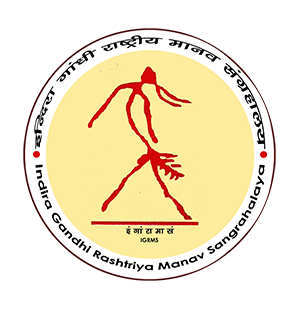गोलाघाट की कुम्भ्कारी परंपरा
क्षेत्रः कुमार गाँव
जिलाःगोलाघाट
राज्यः असम
इन्दिरा गाँधी राष्ट्रीय मानव संग्रहालय द्वारा कुम्हारपारा नाम से संजोई गई प्रदर्शनी में एक अन्य कुम्हारी परंपरा असम के गोलाघाट जिले के कुमार गाँव की कुम्हारी परम्परा है। इनकी कुम्भ्कारी के ज्यादातर कार्य सामाजिक- आर्थिक एवं घरेलू उद्देश्यों की पूर्ती करते हैं। कुम्भ्कारी की सम्पूर्ण प्रक्रिया प्रत्येक स्तर पर विविध तकनीकों के उपयोग का समावेश है। कुम्भ्कारी में वांछित कच्ची सामग्री में चिकनी मिट्टी के साथ प्रयोग में लाये जाने वाले उपकरण अथवा औजार जैसे चाक, अथाली, हथिया, पिटेनी एवं चाकी शामिल हैं। इनके द्वारा बनाये गए प्रादर्शों में दीप, ढोल इत्यादि के अतिरिक्त खाना पकाने के बर्तन (जैसे अख्तिया एवं खोला, दस्कथिया, चारू एवं सतर हैं), जल संग्रह पात्र (कलह एवं तकेली), धान उबालने के लिए पात्र (थाली), बड़े बर्तन (हरी एवं जाका) भी शामिल हैं। कुम्भ्कारी के पूर्व ये कुम्हार पान सुपाड़ी एवं अगरबत्ती से कार्य की सफलता के लिए भूमि पूजन करते हैं। अनुभवी कुम्भकार रंग के लिए मिट्टी का चयन बड़ी सूझ बूझ के साथ करते हैं एवं फिर इसे आकार देना प्रारंभ करते हैं। इस प्रक्रिया में ये प्रथमतः अच्छी गुणवत्ता वाली सफ़ेद महीन रेत के साथ कुमार माटी अथवा हीरा माटी संग्रह करते हैं तब फिर इसके जरिये मिट्टी तैयार करना, मिट्टी से मृदा आकृतियाँ बनाना एवं अंतिम रूप के लिए भट्टी में पकाने हेतु भट्टी तैयार करना शामिल हैं। साधारणतः ये प्रक्रिया 10-12 दिन के अन्तराल पर पूर्ण होती है तब कही जाकर ये पात्र बाजार में बिकने के लिए तैयार होते हैं एवं कुमार कुम्भ्कारों को जीविकोपार्जन के लिए धन मिल पाता है।
POTTERY TRADITION FROM GOLAGHAT
Area: Kumar Gaon
District: Golaghat
State: Assam
Another pottery tradition exhibited by Indira Gandhi Rashtriya Manav Sangrahalaya in the exhibition named ‘Kumhar Para’ is from Kumar Gaon, Golaghat district, Assam. The pots and clay works are mostly related to socio- religious and domestic purposes. The whole process of the pottery making consists of application of different techniques at each stage. The raw materials required for the industry are glutinous clay and the tools or implements used are the wheel (chak), mould (athali), the mallet (hatiya piteni) and polisher (chaki). The articles made by them are cooking pots (such as akathiah and Khola, daskathia, charu and satar), water jars, (kalah and takeli), vessels for boiling paddy (thali), larger vessels (hari and jaka), besides, lamps, pipes and drums. Before making pottery, the potters worship the earth with betal-nut and agarbatti for successful completion of earthen work. The experienced potters verify the clay for colour and start to make it into a new shape. The steps of this tradition are as follows: first they collect the fine quality of white sand, Kumarmati or Hiramati or clay, then it is preserved for making, followed by preparation of clay, making of tapal, gol and dan, giving final shape to earthen potteries and preparing the bhati or furnace for burning dry earthen items for the final stages. Generally, the work is done at an interval of 10-12 days. Then these earthen objects are sold in the market and the Kumar potters earn some money for their livelihood.



